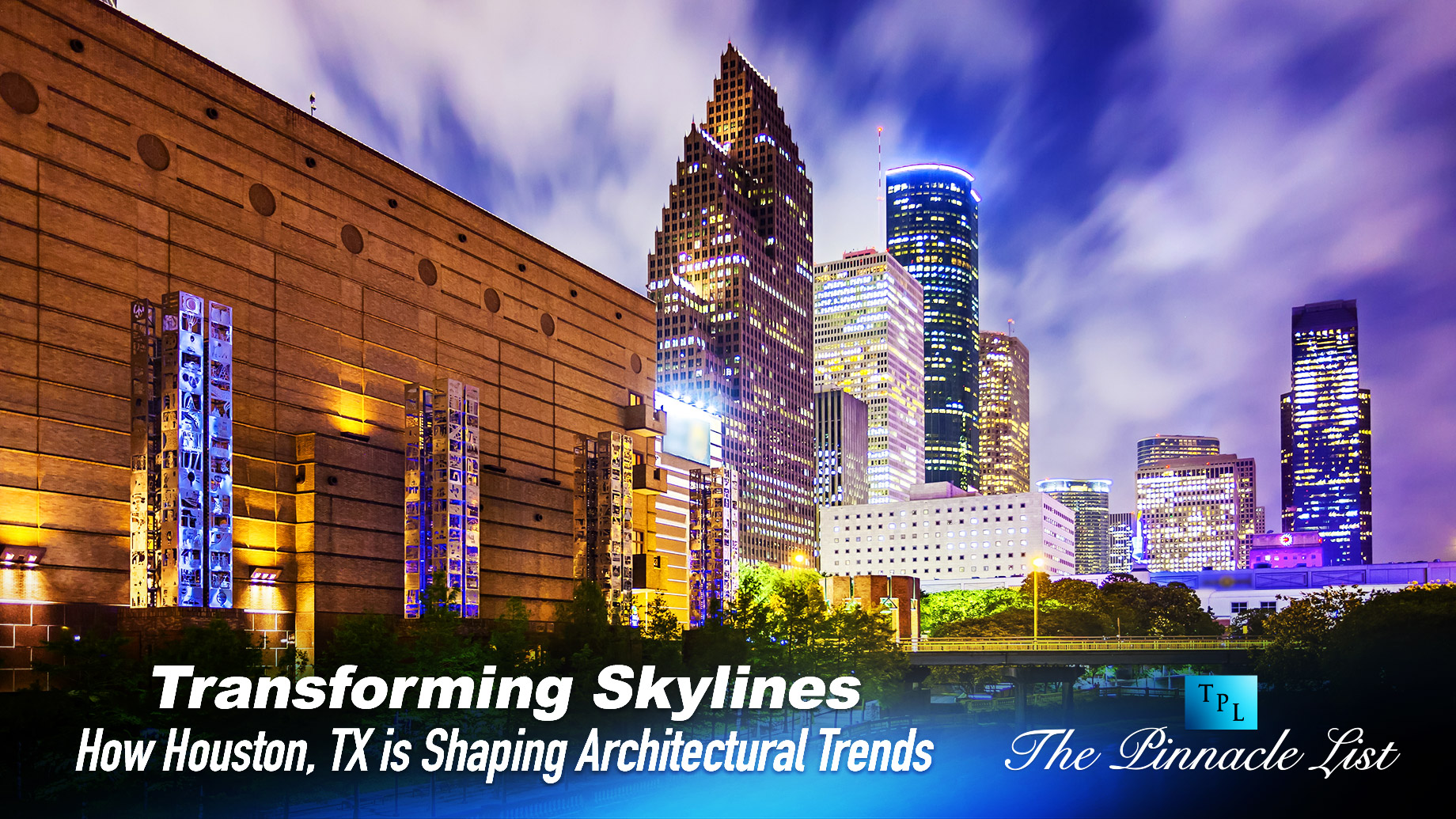
The architectural industry stands as a powerhouse for economic development and a space for innovative design, reflecting the ways in which societies live, work, and interact. As the fourth-largest city in the United States, Houston boasts a skyline in Texas that is both an economic juggernaut and a canvas for the avant-garde. The city’s continuous growth fuels a constantly changing cityscape, where traditional styles meet modern design, making it an important indicator of industry trends. Surging population and economic vitality necessitate innovative solutions that can address urban development’s aesthetic and functional demands.
Within this thriving metropolis, a unique blend of global influences and bold innovation is transforming the cityscape. This article explores architects in Houston and the heart of the city’s architectural development, dissecting how its dedication to innovation reflects its identity and challenges existing norms.
Urban Renewal Projects
As the city changes, Houston is initiating urban transformation projects and incorporating contemporary designs that reveal a dedication to sustainability and community cohesion. These projects, which are revamping areas once ignored, often feature architecture that not only suffices for a growing city but also improves the living conditions for its inhabitants. Promoting pedestrian-friendly environments is a central objective.
The city is striving to foster inclusive spaces where individuals can comfortably reside, labor, and enjoy leisure activities within a short distance. This emphasis on pedestrian access bolsters social engagement and strengthens communal ties. The initiative places importance on public gardens and walkable avenues, as well as interactive public zones that encourage active participation in city life. These upgrades are thoughtfully planned with an eye towards ecological considerations, stressing the application of eco-friendly resources and practices where possible.
Innovative Building Materials
Architects are adopting new materials and techniques that improve construction methods and support environmental sustainability. This groundbreaking approach includes materials such as
recycled glass, bamboo, and advanced composites, demonstrating how design can be both aesthetically appealing and environmentally responsible. Houston’s buildings are becoming icons of sustainability, contesting traditional methods while conserving the environment.
Local architects are not satisfied with merging into the cityscape; they aim to create landmarks that are visually impressive and environmentally aware. This combination of design and practicality is based on a philosophy that recognizes the role of architecture in shaping environments and aiding communities. From employing durable cross-laminated timber to maximizing sunlight with energy-efficient glass, these choices exemplify a vision for a greener future that still embraces modern design.
Mixed-Use Developments
Interest in mixed-use developments in Houston is increasing, indicating a trend towards multifunctional urban spaces. These versatile complexes combine apartments, offices, and shops in one location, offering the convenience that modern life requires. Such developments lead to the creation of dynamic neighborhoods where the distinction between living and working spaces becomes less defined. Residents enjoy shorter commutes while experiencing the vibrancy that comes from having amenities and entertainment that are easily accessible.
This approach to urban planning isn’t just about being close to everything, and it shows a growing desire for community-focused lifestyles. Developers and city planners often highlight the potential of mixed-use complexes to improve social engagement and boost the local economy, thus revitalizing Houston’s urban territory. By combining different parts of daily life in convenient centers, these developments represent an extensive strategy for urban planning that promotes connectedness, ease of access, and a sense of community.
Cultural Influences
Houston’s diverse cultural influences are reflected in the structures that shape its skyline, forming an architectural style that includes elements from various global regions. Areas in Houston represent the cultural origins of their residents, with buildings that evoke distant locales. By incorporating Asian-inspired designs, Latin American energy, and European traditional components, these architectural decisions accomplish more than enhancing the city’s aesthetics; they honor the city community’s global variety. The multicultural effect on architecture extends past appearance, impacting how spaces are used and interacted with, and guiding urban living to acknowledge Houston’s various perspectives.
Sustainability and Green Design
In its pursuit of becoming a leader in urban sustainability, the city now places significant emphasis on integrating green design principles in its architecture. Projects are increasingly assessed based on their environmental impact, incorporating strategies like renewable energy sources, green roofs, and water conservation systems to achieve higher energy efficiency.
Architects and planners are called upon to turn environmental challenges into innovative solutions, designing buildings that not only fulfill their intended function but also contribute positively to the environment. By using energy-efficient materials and advanced technology, these buildings strive to reduce carbon emissions and improve urban sustainability. The move towards a greener architectural practice reflects the city’s broader commitment to proactively tackle environmental conservation, a stance that aligns with a global urgency to combat climate change.
Houston’s architectural transformation in urban development guides the city towards an innovative and sustainable future. Embracing urban renewal projects, utilizing innovative building materials, favoring mixed-use developments, appreciating cultural influences, and prioritizing green design, delineate this path. By shaping its skyline with a clear focus, Houston not only enhances its identity but also creates a desirable quality of life for its populace. The city’s commitment to architectural innovation demonstrates its commitment to creating a flexible and lasting urban environment, one that is ready to meet the challenges of a constantly changing future.